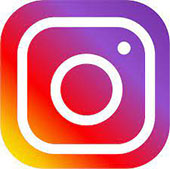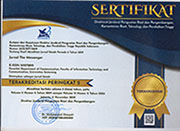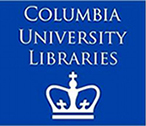Media Preneurship Study for The Dynamics Journalism in Indonesia
Abstract
Introduction: YouTube, is one of the most popular forms of new media platforms in Indonesia. The freedom of the people who can act as creators or spectators is a special attraction for the community, moreover the availability of many choices of content has increasingly made YouTube the mainstay of the best-selling entertainment media. The rise of television journalists using social media, especially YouTube, has made an appeal for studies to be carried out to analyze the dynamics which enables them to utilize their professional competencies as a mediapreneur.
Methods: This study applied a qualitative approach. The method used was the case study approach with in-depth interview and observation as the data collection techniques. The informants for the interview were the television journalist in Jakarta. There were eight television journalists who were used as informants for this study.
Findings: This study found that the presence of new technology in journalistic work practices has eroded professional values. This research reveals the recognition of the erosion of professional values due to the impact of new media, coupled with the interests of entrepreneurial journalists who act as content creators for their own economic interests. Therefore, one way that is able to perpetuate existence is the strengthening and sharpness of in-depth and intact journalism.
Originality: This study has become a novelty since no previous studies in Indonesia which analyze the role of journalists as professionals and also as content creators in mediaprenership efforts in the digital era.
Keywords
Full Text:
PDFReferences
Adi, Suminar, & Sjafirah. (2019). Pengalaman Youtuber Kota Bandung dalam Membentuk Identitas Diri Virtual dalam Media Youtube. PROMEDIA, 5(2), 132–170.
Anderson, M., & Jiang, J. (2018). Teens, Social Media & Technology 2018. Pew Research Center, 31.
Antony, M. G., & Thomas, R. J. (2010). ‘This is citizen journalism at its finest’: YouTube and the public sphere in the Oscar Grant shooting incident. New Media & Society, 12(8), 1280–1296. https://doi.org/https://doi.org/10.1177/1461444810362492
Bossio, D., & Holton, A. E. (2021). Burning out and turning off: Journalists’ disconnection strategies on social media. Journalism, 22(10), 2475–2492. https://doi.org/https://doi.org/10.1177/1464884919872076
Bouvier, G. (2015). What is a discourse approach to Twitter, Facebook, YouTube and other social media: connecting with other academic fields? In Journal of Multicultural Discourses (Vol. 10, Issue 2, pp. 149–162). Taylor & Francis. https://doi.org/https://doi.org/10.1080/17447143.2015.1042381
Briandana, R., Fasta, F., Mihardja, E. J., & Qasem, A. (2021). Exploring Self Identity: An Analysis of Audience Reception of Vlogs. ASPIKOM, 6(2), 303–314. https://doi.org/10.24329/aspikom.v6i2.921
Briandana, R., & Mohamad Saleh, M. S. (2022). Implementing Environmental Communication Strategy Towards Climate Change through Social Media in Indonesia. Online Journal of Communication and Media Technologies, 12(4), e202234. https://doi.org/10.30935/ojcmt/12467
Carlson, M., & Berkowitz, D. (2014). ‘The emperor lost his clothes’: Rupert Murdoch, News of the World and journalistic boundary work in the UK and USA. Journalism, 15(4), 389–406. https://doi.org/https://doi.org/10.1177/1464884913477280
Carr, C. T., & Hayes, R. A. (2015). Social Media: Defining, Developing, and Divining. Atlantic Journal of Communication, 23(1), 46–65. https://doi.org/10.1080/15456870.2015.972282
Casero-Ripollés, A., Izquierdo-Castillo, J., & Doménech-Fabregat, H. (2016). The journalists of the future meet entrepreneurial journalism: Perceptions in the classroom. Journalism Practice, 10(2), 286–303. https://doi.org/https://doi.org/10.1080/17512786.2015.1123108
Chinmi, M., & Marta, R. F. (2020). RuangGuru as an Ideation of Interaction and Education Revolution during COVID-19 Pandemic in Indonesia 2 . COVID-19 In Indonesia. Revista Romaneasca Pentru Educatie Multidimensionala, 12, 119. https://doi.org/https://doi.org/10.18662/rrem/12.2Sup1/297 RuangGuru
Chinmi, M., Marta, R. F., Haryono, C. G., Fernando, J., & Jai Kishon Goswami. (2020). Exploring Online News as Comparative Study Between Vendatu at India And RuangGuru from Indonesia In COVID-19 Pandemic. Journal of Content, Community and Communication, 11, 168. https://doi.org/10.31620/JCCC.06.20/13
Christian, M. (2019). Telaah Keniscayaan Iklan di Kanal Youtube Sebagai Perilaku Khalayak di Kalangan Milenial [Study the Inevitability of Ads on Youtube Channels as Public Behavior among Millennials]. Bricolage : Jurnal Magister Ilmu Komunikasi, 5(02), 141. https://doi.org/10.30813/bricolage.v5i02.1890
Çiçek, B. (2018). Social Media Entrepreneurship. İçtimaiyat, 2(1), 10–17.
Cicek, M., Ulu, S., & Uslay, C. (2019). The impact of the slow city movement on place authenticity, entrepreneurial opportunity, and economic development. Journal of Macromarketing, 39(4), 400–414. https://doi.org/https://doi.org/10.1177/0276146719882767
Crick, M. (2017). YouTube: Surveillance, Power, Audience, and Monetizing the Message. In Biometrics: Concepts, Methodologies, Tools, and Applications (pp. 1439–1463). IGI Global.
Cunningham, S., & Craig, D. (2016). Online entertainment: A new wave of media globalization? International Journal of Communication, 10(3), 5409–5425. https://doi.org/https://eprints.qut.edu.au/222423/
Dwityas, N. A., Briandana, R., Farady, R., & Aliagan, I. Z. (2022). Marketing communication strategy for creative talents service providers a case study of an online marketplace in Indonesia. International Journal of Communication and Society, 4(1), 82–91. https://doi.org/doi.org/10.31763/ijcs.v4i1.352
Dwityas, N. A., Mulyana, A., Hesti, S., Briandana, R., & Putrianti, M. K. (2020). Digital Marketing Communication Strategies: The Case of Indonesian News‘ Portals. International Journal of Economics and Business Administration, VIII(Issue 3), 307–316. https://doi.org/10.35808/ijeba/517
Eilein Landers, D., & Chan-Olmsted, S. (2004). Assessing the changing network TV market: A resource-based analysis of broadcast television networks. Journal of Media Business Studies, 1(1), 1–26. https://doi.org/https://doi.org/10.1080/16522354.2004.11073418
Ekström, M., & Westlund, O. (2019). The dislocation of news journalism: A conceptual framework for the study of epistemologies of digital journalism. Media and Communication, 7(1), 259–270. https://doi.org/https://doi.org/10.17645/mac.v7i1.1763
Flew, T. (2011). Rethinking public service media and citizenship: Digital strategies for news and current affairs at Australia’s Special Broadcasting Service (SBS). International Journal of Communication, 5(2011), 215–232.
Fulton, J. (2015). Are you a journalist? New media entrepreneurs and journalists in the digital space. Javnost-The Public, 22(4), 362–374. https://doi.org/https://doi.org/10.1080/13183222.2015.1091624
Gane, N., & Beer, D. (2008). New Media The Key Concept. Berg.
García-Rapp, F. (2016). The digital media phenomenon of YouTube beauty gurus: The case of Bubzbeauty. International Journal of Web Based Communities, 12(4), 360–375. https://doi.org/10.1504/IJWBC.2016.080810
Gourlay, L., Hamilton, M., & Lea, M. R. (2014). Textual practices in the new media digital landscape: messing with digital literacies. Research in Learning Technology, 21(4). https://doi.org/https://doi.org/10.3402/rlt.v21.21438
Haftor, D., & Mirijamdotter, A. (2011). Information and Communication Technologies, Society and Human Beings: Theory and Framework. IGI Global.
Herbert, J. (1999). Journalism in the digital age: Theory and practice for broadcast, print and online media. Routledge.
Holland, M. (2016). How YouTube Developed into a Successful Platform for User-Generated Content. Elon Journal of Undergraduate Research in Communications, 7, 1. https://doi.org/http://www.inquiriesjournal.com/a?id=1477
Ioanid, A., & Scarlat, C. (2017). Factors influencing social networks use for business: Twitter and YouTube analysis. Procedia Engineering, 181(3), 977–983. https://doi.org/https://doi.org/10.1016/j.proeng.2017.02.496
Jin, D. Y., & Feenberg, A. (2015). Commodity and community in social networking: Marx and the monetization of user-generated content. The Information Society, 31(1), 52–60. https://doi.org/https://doi.org/10.1080/01972243.2015.977635
Karjaluoto, H., Ulkuniemi, P., & Mustonen, N. (2015). The role of digital channels in industrial marketing communications. Journal of Business & Industrial Marketing. https://doi.org/https://doi.org/10.1108/JBIM-04-2013-0092
Khairiyani, E. S. (2022). YouTube content commodification: a critical discourse analysis on Deddy Corbuzier’s channel. Jurnal Studi Komunikasi, 6(1), 213–234. https://doi.org/10.25139/jsk.v6i1.4335
Konieczna, M., Mattis, K., Tsai, J.-Y., Liang, X., & Dunwoody, S. (2014). Global journalism in decision-making moments: A case study of Canadian and American television coverage of the 2009 United Nations Framework Convention on Climate Change in Copenhagen. Environmental Communication, 8(4), 489–507. https://doi.org/https://doi.org/10.1080/17524032.2014.909509
Kotler, P., Keller, K. L., Brady, M., Goodman, M., & Hansen, T. (2016). Marketing Management. Pearson Education Ltd.
Lecheler, S., & Kruikemeier, S. (2016). Re-evaluating journalistic routines in a digital age: A review of research on the use of online sources. New Media & Society, 18(1), 156–171. https://doi.org/https://doi.org/10.1177/1461444815600412
Lee, H.-H., & Chang, E. (2011). Consumer attitudes toward online mass customization: An application of extended technology acceptance model. Journal of Computer-Mediated Communication, 16(2), 171–200. https://doi.org/https://doi.org/10.1111/j.1083-6101.2010.01530.x
Lichtenstein, D., Herbers, M. R., & Bause, H. (2021). Journalistic YouTubers and their role orientations, strategies, and professionalization tendencies. Journalism Studies, 22(9), 1103–1122. https://doi.org/https://doi.org/10.1080/1461670X.2021.1922302
Liem, S., Marta, R. F., & Panggabean, H. (2019). Sanitation Behavior and Risk of Stunting: Understanding the Discourse of a Public Service Announcement. Jurnal The Messenger, 11(2), 168. https://doi.org/10.26623/themessenger.v11i2.1317
Lopezosa, C., Orduña-Malea, E., & Pérez-Montoro, M. (2020). Making video news visible: Identifying the optimization strategies of the cybermedia on YouTube using web metrics. Journalism Practice, 14(4), 465–482. https://doi.org/https://doi.org/10.1080/17512786.2019.1628657
Marta, R. F., Achmad Daengs, G. S., Daniar, A., Seprina, W. O., & Menayang, A. P. (2019). Information Security Risk and Management in Organizational Network. International Journal of Engineering and Advanced Technology, 8(6 Special Issue 2), 1153. https://doi.org/10.35940/ijeat.F1286.0886S219
Marta, R. F., & Fernando, J. (2020). Dialectics of Forgiveness between Ethnic Communities for West Kalimantan Harmony. Jurnal The Messenger, 12(1), 1. https://doi.org/10.26623/themessenger.v12i1.1408
Moor, P. J., Heuvelman, A., & Verleur, R. (2010). Flaming on YouTube. Computers in Human Behavior, 26(6), 1536–1546. https://doi.org/https://doi.org/10.1016/j.chb.2010.05.023
Mulyana, A., Briandana, R., & Rekarti, E. (2020). ICT and Social Media as a Marketing Communication Platform in Facilitating Social Engagement in the Digital Era. In International Journal of Innovation, Creativity and Change. (Vol. 13, Issue 5). https://doi.org/https://www.ijicc.net/images/vol_13/Iss_5/13501_Mulyana_2020_E_R.pdf
Noam, E. (2018). Beyond the mogul: From media conglomerates to portfolio media. Journalism, 19(8), 1096–1130. https://doi.org/10.1177/1464884917725941
Norbäck, M. (2021). Back to the future of journalist work? Entrepreneurial subjectivity and freelance journalism in Sweden. Journalism, 14648849211033132.
Norris, A. R. (2012). Computer-mediated communication and globalization: Considering social, academic, and business factors. Inquiries Journal, 4(02). https://doi.org/http://www.inquiriesjournal.com/a?id=617
Nurrahmi, F., Sari, J., Marta, R. F., Setiawan, Y. B., & Rahim, R. (2018). Aceh young users purchase intention by online store exposure on Facebook. International Journal of Data and Network Science, 2(2), 41–48. https://doi.org/10.5267/j.ijdns.2018.7.004
Ørmen, J., & Gregersen, A. (2023). Towards the engagement economy: interconnected processes of commodification on YouTube. Media, Culture & Society, 45(2), 225–245. https://doi.org/https://doi.org/10.1177/01634437221111951
Pavlik, J. V. (2001). Journalism and new media. Columbia University Press.
Perreault, G. P., & Ferrucci, P. (2020). What is digital journalism? Defining the practice and role of the digital journalist. Digital Journalism, 8(10), 1298–1316. https://doi.org/https://doi.org/10.1080/21670811.2020.1848442
Perren, A. (2010). Business as unusual: Conglomerate-sized challenges for film and television in the digital arena. Journal of Popular Film & Television, 38(2), 72–78. https://doi.org/https://doi.org/10.1080/01956051.2010.483349
Perusko, Z., Vozab, D., & Čuvalo, A. (2015). Media Audiences Digital Mediascapes, Institutional Frameworks, and Audience Practices Across Europe. International Journal of Communication, 9(4), 23.
Robin, P. (2021). The Alteration of Journalism Practice in Digital Era Amid the Covid-19 Pandemic. 3rd Jogjakarta Communication Conference (JCC 2021), 217–218. https://doi.org/10.2991/assehr.k.211121.051
Ruiz-Gomez, A., Leaver, T., & Abidin, C. (2022). Playing YouTube: How the Nancy YouTuber doll and app position children as aspiring YouTube influencers. International Journal of Cultural Studies, 25(2), 121–140. https://doi.org/https://doi.org/10.1177/13678779211063222
Saldaña, M., Higgins Joyce, V. de M., Schmitz Weiss, A., & Alves, R. C. (2017). Sharing the stage: Analysis of social media adoption by Latin American journalists. Journalism Practice, 11(4), 396–416. https://doi.org/https://doi.org/10.1080/17512786.2016.1151818
Scarborough, N. M., & Zimmerer, T. (1996). Effective small business management (Vol. 2). Prentice Hall.
Scolari, C. A. (2009). Mapping conversations about new media: the theoretical field of digital communication. New Media & Society, 11(6), 943–964. https://doi.org/https://doi.org/10.1177/1461444809336513
Setiawan, Y. B., Sarwono, B. K., Asteria, D., & Sunarto, S. (2022). Perpetuation of Stigmatization of Minority Groups through Convergence of Content on Streaming and Social Media. Jurnal The Messenger, 14(1), 17–35. https://doi.org/http://dx.doi.org/10.26623/themessenger.v14i1.4158
Steinberg, M., Mukherjee, R., & Punathambekar, A. (2022). Media power in digital Asia: Super apps and megacorps. Media, Culture & Society, 44(8), 1405–1419. https://doi.org/https://doi.org/10.1177/01634437221127805
Tannady, H., Resdiansyah, Andry, J. F., & Marta, R. F. (2020). Exploring the role of ICT readiness and information sharing on supply chain performance in coronavirus disruptions. Technology Reports of Kansai University, 62(5), 2581–2588.
Tanner, A., & Smith, L. (2007). Training tomorrow’s television journalists: In the trenches with media convergence. Electronic News, 1(4), 211–225. https://doi.org/https://doi.org/10.1080/19312430701646053
Tapsell, R. (2012). Politics and the press in Indonesia. Media Asia, 39(2), 109–116.
Tapsell, R. (2014). Digital media in Indonesia and Malaysia: Convergence and conglomeration. Asiascape: Digital Asia, 1(3), 201–222. https://doi.org/https://doi.org/10.1163/22142312-12340012
Thomas, M. (2011). Deconstructing digital natives: Young people, technology, and the new literacies. Taylor & Francis.
Walters, P. (2022). Reclaiming control: How journalists embrace social media logics while defending journalistic values. Digital Journalism, 10(9), 1482–1501. https://doi.org/https://doi.org/10.1080/21670811.2021.1942113
Ward Sr, M. (2018). A new kind of church: The religious media conglomerate as a “denomination.” Journal of Media and Religion, 17(3–4), 117–133. https://doi.org/https://doi.org/10.1080/15348423.2019.1595839
Wearesocial.com. (2022). Digital 2022: Another Year Of Bumper Growth. Wearesocial.Com. https://doi.org/https://wearesocial.com/uk/blog/2022/01/digital-2022-another-year-of-bumper-growth-2/
Welbourne, D. J., & Grant, W. J. (2016). Science communication on YouTube: Factors that affect channel and video popularity. Public Understanding of Science, 25(6), 706–718. https://doi.org/https://doi.org/10.1177/0963662515572068
Witschge, T., & Harbers, F. (2018). The entrepreneurial journalist. In The Routledge handbook of developments in digital journalism studies (pp. 64–76). Routledge.
Yin, R. K. (2013). Applications of case study research. In Applied Social Research Methods Series (Third). Sage Publications. https://doi.org/10.1097/FCH.0b013e31822dda9e
Zappin, A., Malik, H., Shakshuki, E. M., & Dampier, D. A. (2022). YouTube monetization and censorship by proxy: A machine learning prospective. Procedia Computer Science, 198, 23–32. https://doi.org/https://doi.org/10.1016/j.procs.2021.12.207
DOI: http://dx.doi.org/10.26623/themessenger.v14i3.2635
Refbacks
- There are currently no refbacks.
Copyright (c) 2022 Jurnal The Messenger
View My Stats [Jurnal The Messenger] is an International Scientific Journal, Published by the Department of Communication, Faculty of Information Technology and Communication, Universitas Semarang (Central Java, Indonesia). It is licensed under a Creative Commons Attribution 4.0 International License.



_11.jpg)




_BARCODE.jpg)
_BARCODE1.jpg)


5.png)










2.png)





